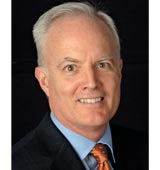|
Executive Interviews: Interview with Jay A Conger on The Making of a CEO
January 2009
-
By Dr. Nagendra V Chowdary
 Jay A Conger
Jay A Conger Henry Kravis Chaired Professor of Leadership at Claremont McKenna College in California and Visiting Professor at the London Business School 
Should all the CEOs necessarily be
leaders? Can all the leaders be CEOs?
When boards make their CEO hiring
decisions, what do you think should
be the guiding principles?
Yes, all CEOs should be leaders. That
said, many do not possess enough
depth of leadership ability. Many
leaders, however, cannot become
CEOs. There is an immense level of
complexity in the CEO role. It requires
years of seasoning and depth
in an industry or sector. You have to
have a deep strategic sense which I
find many managers lack.
|
|
You must
be able to relate to a broad range of
external and internal constituents. Finally,
you need a real depth of finance
today. So few individuals possess the
critical mass of these qualities to become
an effective CEO. In most MBA curricula, leadership
may be just one of the many courses
offered. Should a course in leadership
be made mandatory at business
schools? If yes, what according to you
is the best form of delivery?
Yes, it should be mandatory. That
said, in most schools, it is an elective.
The best form of delivery would involve
multiple methods—case studies,
experiential learning focused on
building skills, personal reflection exercises,
and lots of individual feedback. What according to you should be
the role of organizations in nurturing
and developing leadership talent
within the company? GE has always
been known as CEO Factory. What
should other companies do to improve
their bench strength? And also
is there any danger when too many
leaders are developed with too few
leadership positions (at the top) to be
filled?
I have always felt that organizations
need to be very proactive in their development
activities. They need to
provide coaching, mentoring, careful
selection of jobs, and long-termcareer
planning. That said, many companies
have a ‘sink or swim’ mentality…
assuming that the best talent
will simply rise to the top. I believe
that managers are like athletes. To become
world class, they need coaching,
feedback, and challenging experiences.
An Olympian athlete receives
training all the way to the moment of
their competitive event. In contrast,
most managers receive the greatest
amount of training when they are
young and early in their career. Yet
theirmost important ‘events’ are at the
senior levels. Yet we do less and less
for them as they move up the hierarchy.
It is a complete paradox. I personally
believe that there is little danger
of having too many leaders for the
top. Right now, most organizations
have too few. Witness how often
CEOs and executives fail. You have conducted a survey of
human resources executives from 40
companies around the world in 2005
and you (along with Douglas A
Ready) wrote a wonderful piece –
“Make Your Company a Talent Factory”,
HBR, June 2007. Can you share
with us the two powerful ideas that
you have advocated – The Functionality
Wheel and The Vitality Wheel –
to have an effective talent management
system?
Functionality refers to the rigorous
talent processes that support strategic
and cultural objectives while vitality
is the emotional commitment on the
part ofmanagement that is reflected in
daily actions. So functionality is
about developing the tools and systems
that allow a company to put the
right people with the right skills in
the right place at the right time.While
critical, processes can, however, be
copied with some effort by competitors.
Vitality, however, is about the attitudes
and mindsets of the people responsible
for those processes—not
just in human resources but to the
very top of the organization and throughout the line. It is very difficult
to copy passion, but there are measures
companies can take to build it
into their cultures. Both dimensions
are critical to support a world class
talent organization. Most of the companies (including
Fortune 500) in the world have espoused
values, philosophies, ethos,
etc., embedded into their organizational
culture. But, the employees
come with their own work culture
(their individual work ethos, attitudes,
etc.) and mostly there is a definitemismatch
between organizational
culture and work culture, i.e., there is
often difference between what the organization
stands for and what the individual
stands for. How should
such differences be resolved so that
the individuals can become super
performers rather than being just mediocre
performers?
I believe that selection and promotion
are a company’s best vehicles for
aligning values and work attitudes.
Companies need great clarity on the
behaviors that give their
organization’s leaders a competitive
advantage. These behaviors need to
be selected, trained and rewarded
with great rigor and consistency.
1.
The CEO Compensation Controversy Case Study
2. ICMR
Case Collection
3.
Case Study Volumes
|
